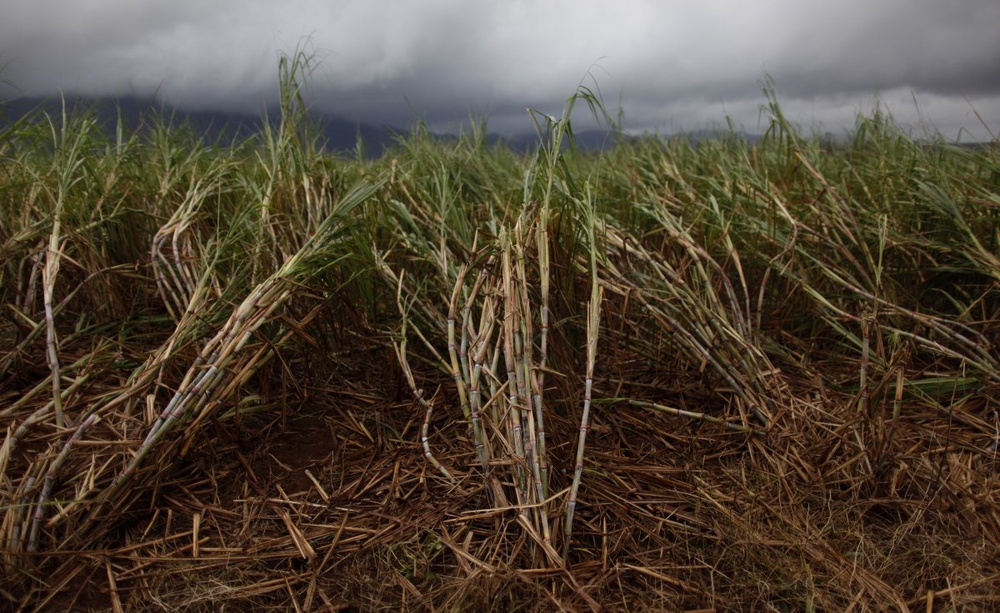
A powerful cyclone lashed Australia's resources-rich west coast Tuesday, bringing torrential rains and destructive gales that ripped up trees and roofs and closed major global iron ore operations, AFP reports. Tropical Cyclone Christine made landfall around midnight as a category three of five storm, packing winds in excess of 170 kilometres (105 miles) per hour and heavy rains that cut power to several towns, brought down trees and damaged homes. Christine weakened to a category two heading inland, with destructive wind gusts of between 110-130 kilometres per hour. But a red alert remained in place for towns in the storm's path including Port Hedland, Karratha and Dampier, home to BHP Billiton and Rio Tinto's flagship iron ore mining and port operations. A red alert requires people to stay indoors. "It is important that residents understand that very dangerous conditions are continuing. Communities in the north west will remain on a red alert until it is safe to declare an all-clear," a department of fire and emergency services statement said. "People need to continue to stay indoors and shelter either in a welfare centre or in the strongest, safest part of a building." Until residents are allowed outdoors a full picture of the damage will not be known, but some witnesses described it as among the worst storms they had seen. "We haven't had one that's been this severe for quite some time," Karratha resident Margaret Bertling told the Australian Broadcasting Corporation. In neighbouring Wickham residents described trees torn from the ground and snapped mid-trunk, with outbuildings ripped from their foundations and roofs hanging from buildings. A tree had fallen on one home, trapping a family inside, but emergency officials said reports of damage so far had been moderate overall. "Even though there was lots of strong winds we've got away with just a minimal amount of damage," said Port Hedland emergency chief Merv Austic. Cyclones are relatively common in northwestern Australia during the December-February summer months, with an average of two major storm systems recorded every year in the sparsely populated region.





A powerful cyclone lashed Australia's resources-rich west coast Tuesday, bringing torrential rains and destructive gales that ripped up trees and roofs and closed major global iron ore operations, AFP reports.
Tropical Cyclone Christine made landfall around midnight as a category three of five storm, packing winds in excess of 170 kilometres (105 miles) per hour and heavy rains that cut power to several towns, brought down trees and damaged homes.
Christine weakened to a category two heading inland, with destructive wind gusts of between 110-130 kilometres per hour.
But a red alert remained in place for towns in the storm's path including Port Hedland, Karratha and Dampier, home to BHP Billiton and Rio Tinto's flagship iron ore mining and port operations.
A red alert requires people to stay indoors.
"It is important that residents understand that very dangerous conditions are continuing. Communities in the north west will remain on a red alert until it is safe to declare an all-clear," a department of fire and emergency services statement said.
"People need to continue to stay indoors and shelter either in a welfare centre or in the strongest, safest part of a building."
Until residents are allowed outdoors a full picture of the damage will not be known, but some witnesses described it as among the worst storms they had seen.
"We haven't had one that's been this severe for quite some time," Karratha resident Margaret Bertling told the Australian Broadcasting Corporation.
In neighbouring Wickham residents described trees torn from the ground and snapped mid-trunk, with outbuildings ripped from their foundations and roofs hanging from buildings.
A tree had fallen on one home, trapping a family inside, but emergency officials said reports of damage so far had been moderate overall.
"Even though there was lots of strong winds we've got away with just a minimal amount of damage," said Port Hedland emergency chief Merv Austic.
Cyclones are relatively common in northwestern Australia during the December-February summer months, with an average of two major storm systems recorded every year in the sparsely populated region.

 +7 (777) 001 44 99
+7 (777) 001 44 99



 Қазақша
Қазақша Русский
Русский English
English














































